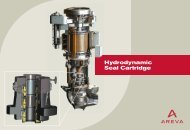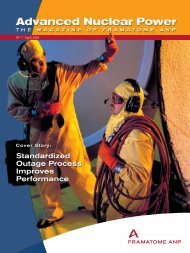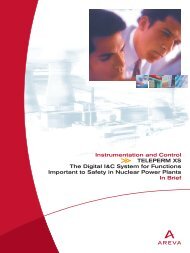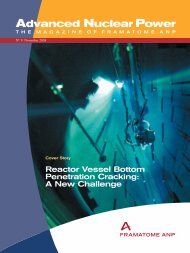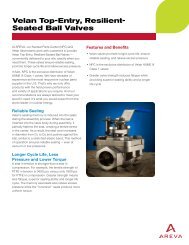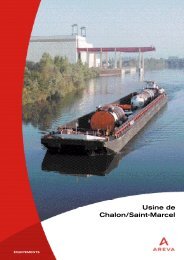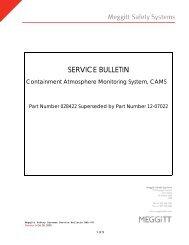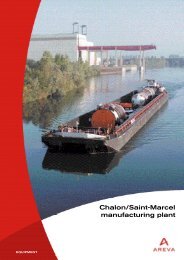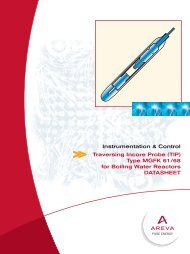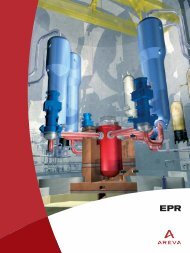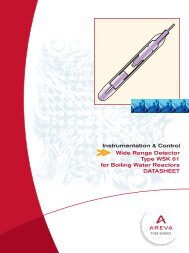Areva EPR
Areva EPR
Areva EPR
Create successful ePaper yourself
Turn your PDF publications into a flip-book with our unique Google optimized e-Paper software.
Reactor pressure vessel and internals cutaway<br />
CRDM<br />
adaptator<br />
Level measurement<br />
probe<br />
Vessel head<br />
Control rod<br />
guide<br />
assembly<br />
Core barrel<br />
CRDM adaptor<br />
thermal sleeve<br />
Inlet<br />
nozzle<br />
Outlet<br />
nozzle<br />
Reactor<br />
vessel body<br />
Heavy<br />
reflector<br />
Rod cluster<br />
control assembly<br />
RCCA<br />
Fuel assembly<br />
Irradiation<br />
specimen<br />
capsule<br />
Core<br />
support plate<br />
Flow<br />
distribution<br />
device<br />
The ductile-brittle transition temperature (RT NDT ) of the RPV material<br />
remains lower than 30 °C at the end of the design life. This result is<br />
obtained from the choice of the RPV material and its specified low<br />
content in residual impurities, and also thanks to a reduced neutron<br />
fluence to the RPV due to the implementation of a neutron reflector<br />
surrounding the core and protecting the RPV against the neutron<br />
flux.<br />
The suppression of any weld between the flange and the nozzle shell<br />
course plus the set-on design of the nozzles allow an increase of<br />
the vertical distance between the nozzles and the top of the core.<br />
Therefore, in the assumption of a loss of coolant situation, more time<br />
is available for the operator to counteract the risk of having the core<br />
uncovered by the coolant.<br />
† Consistently with the <strong>EPR</strong> 60-year design<br />
life, an increased margin with regard<br />
to Reactor Pressure Vessel (RPV)<br />
embrittlement is obtained from neutron<br />
fluence reduction (RPV diameter enlarged,<br />
neutron heavy reflector, low neutron<br />
leakage fuel management) and from RPV<br />
material specifications (reduced RT NDT ).<br />
† The nozzle axis raising improves the fuel<br />
cooling in the event of a loss of coolant<br />
accident.<br />
† The elimination of any penetration through<br />
the RPV bottom head strengthens its<br />
resistance in case of postulated core<br />
meltdown and prevents the need for<br />
in-service inspection and potential repairs.<br />
† The reduced number of welds and<br />
the weld geometry decrease the need<br />
for in-service inspection, facilitate nondestructive<br />
examinations and reduce<br />
inspection duration as well.<br />
† A low Cobalt residual content of the<br />
stainless steel cladding is specified<br />
to less than 0.06% to contribute to<br />
the radiation source term reduction.<br />
I 23



